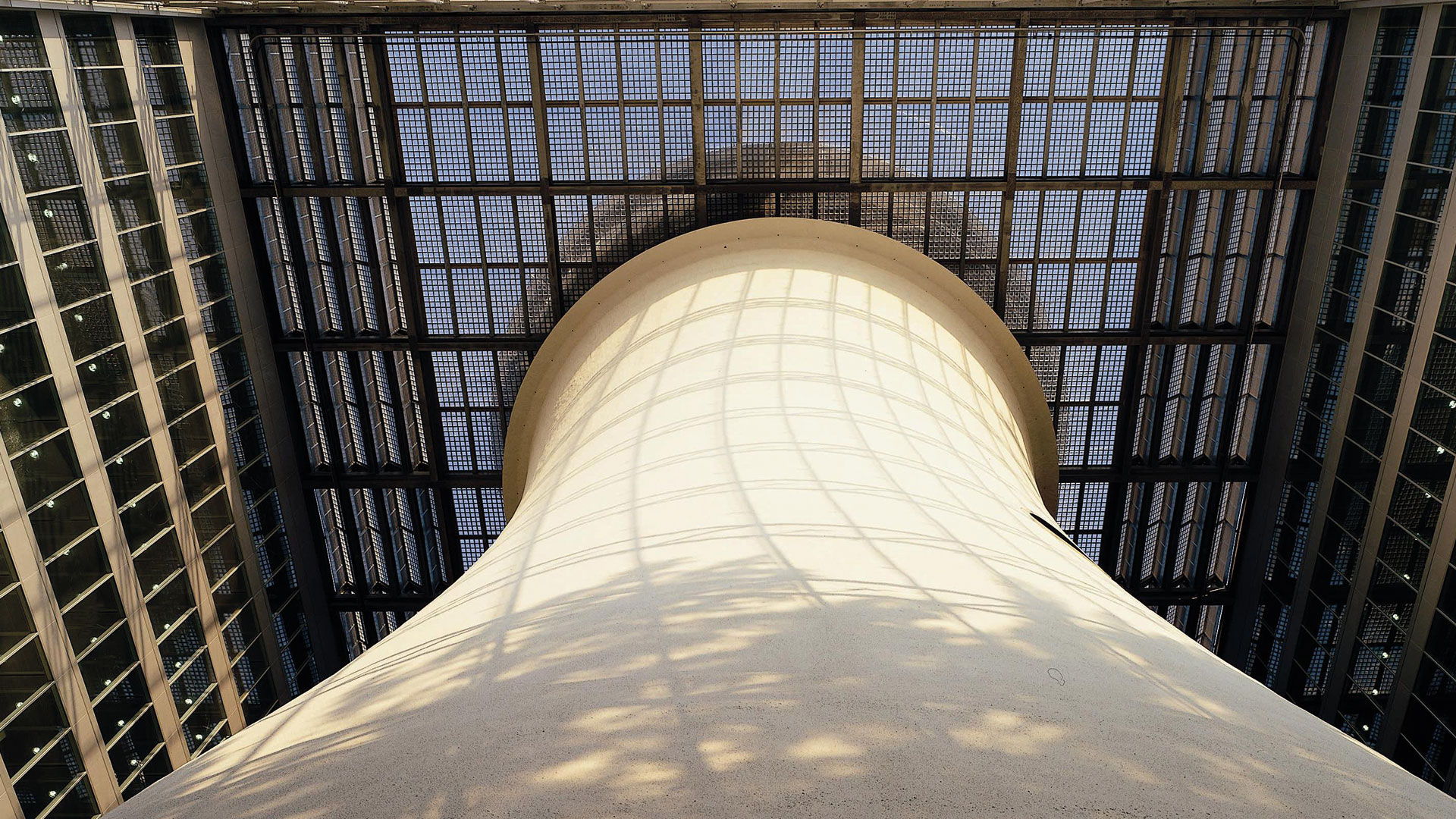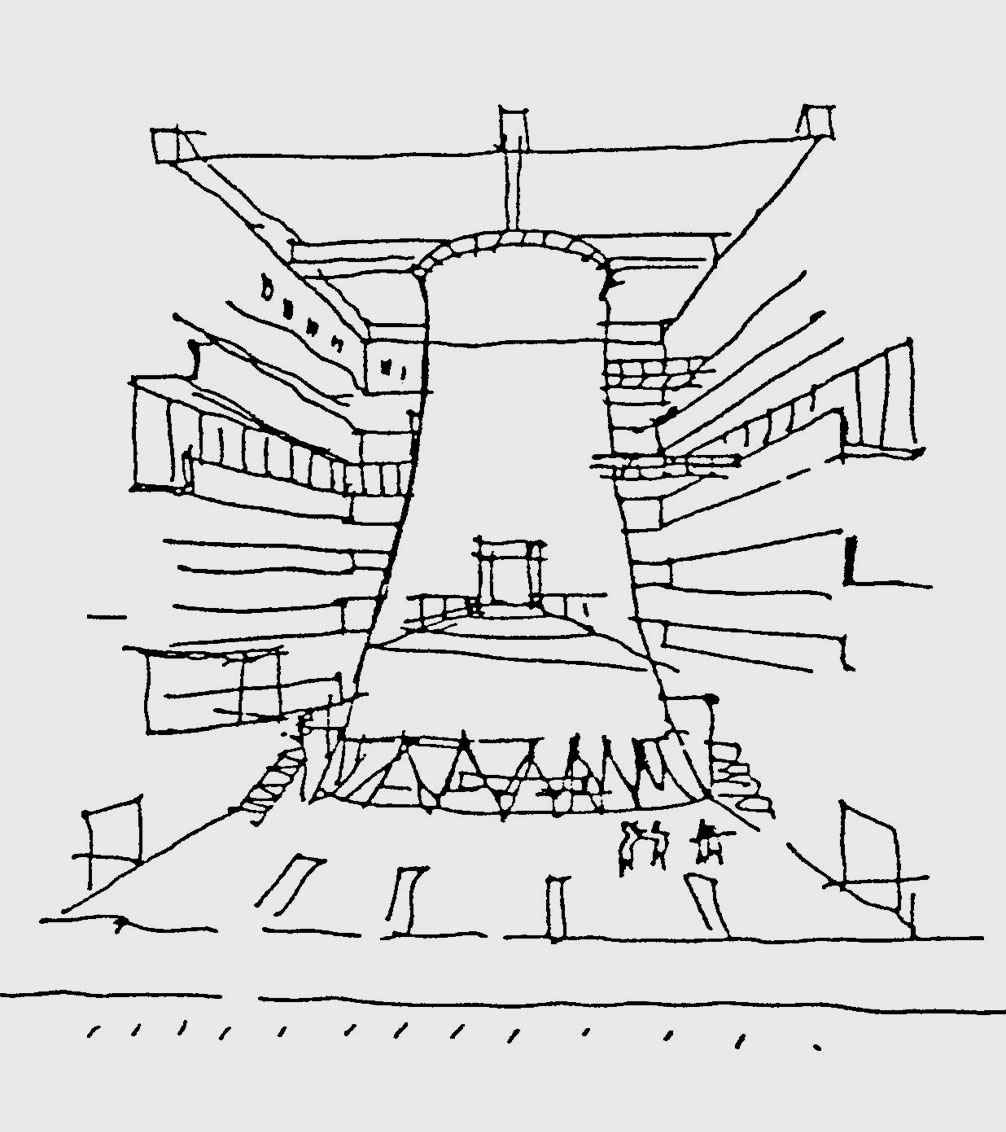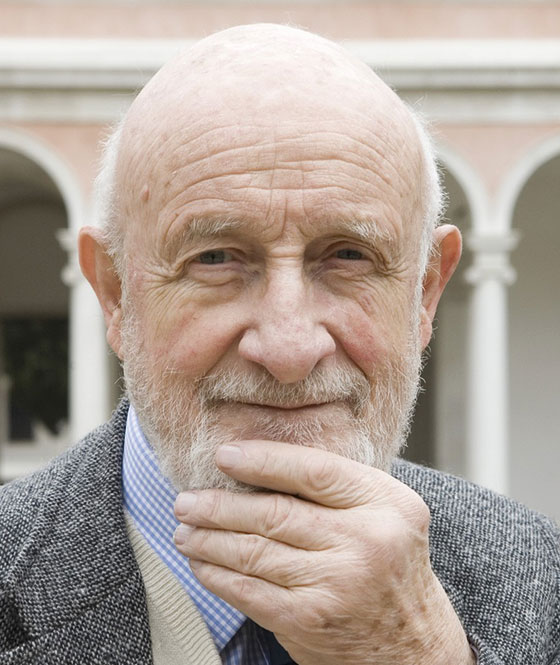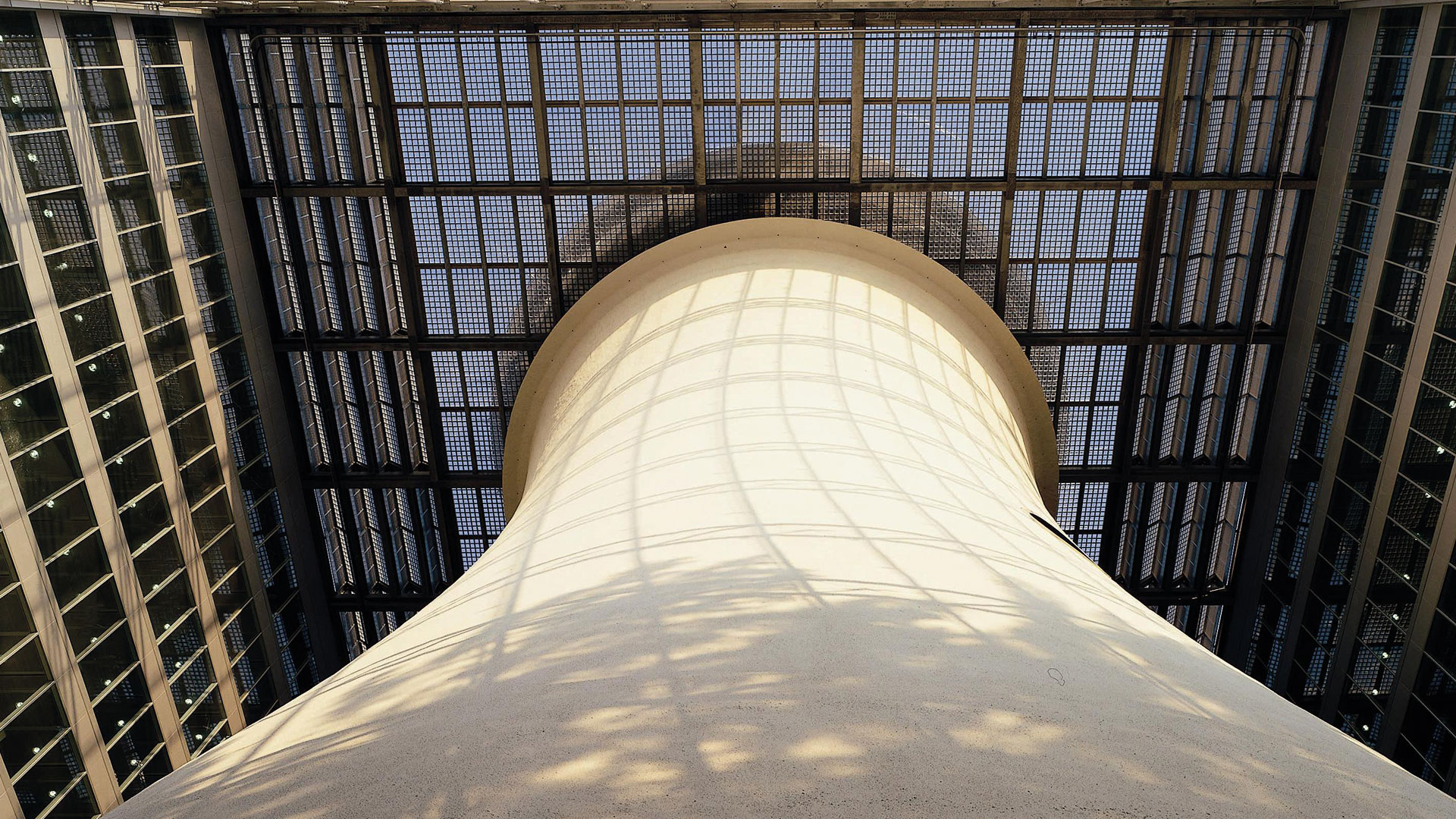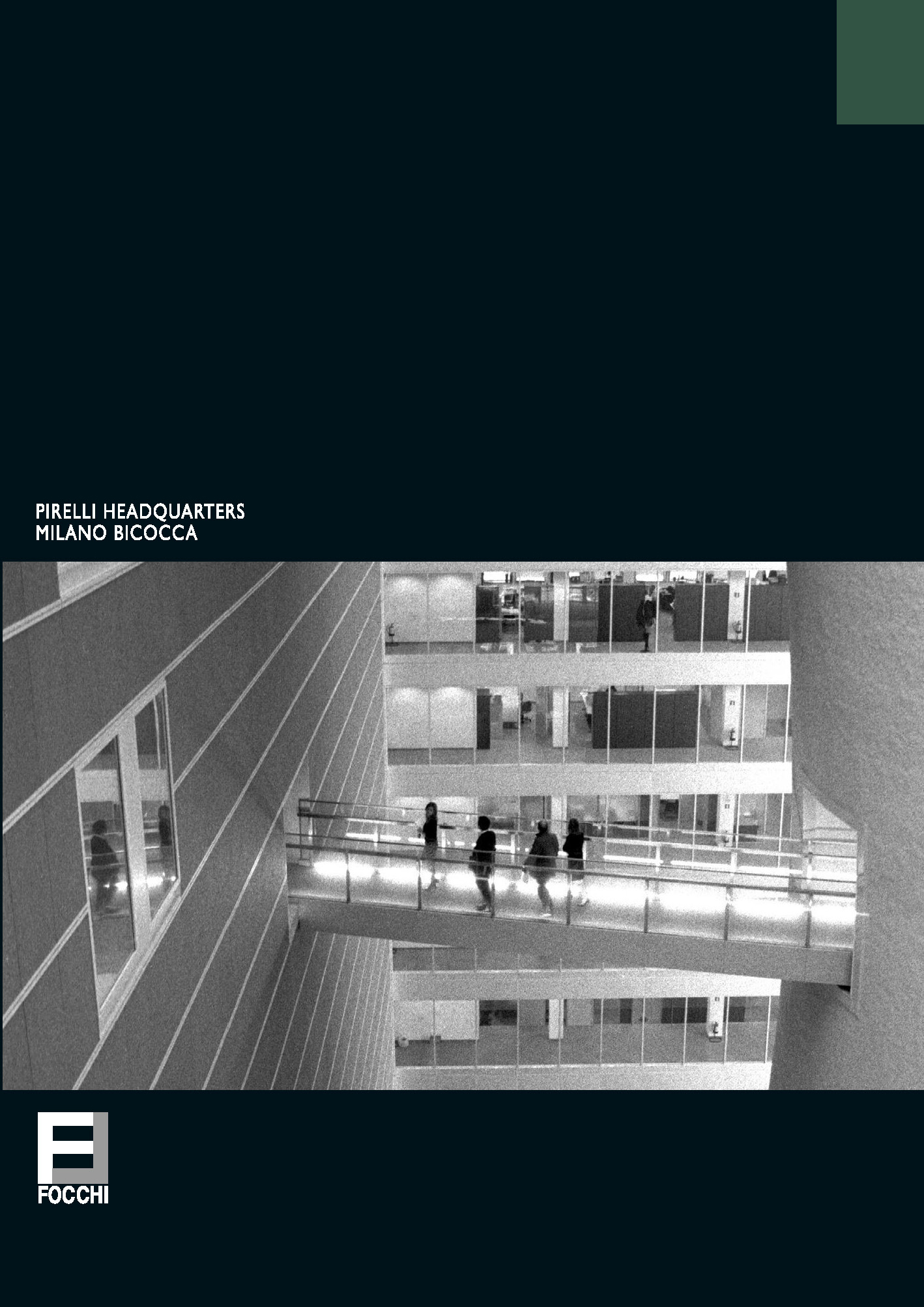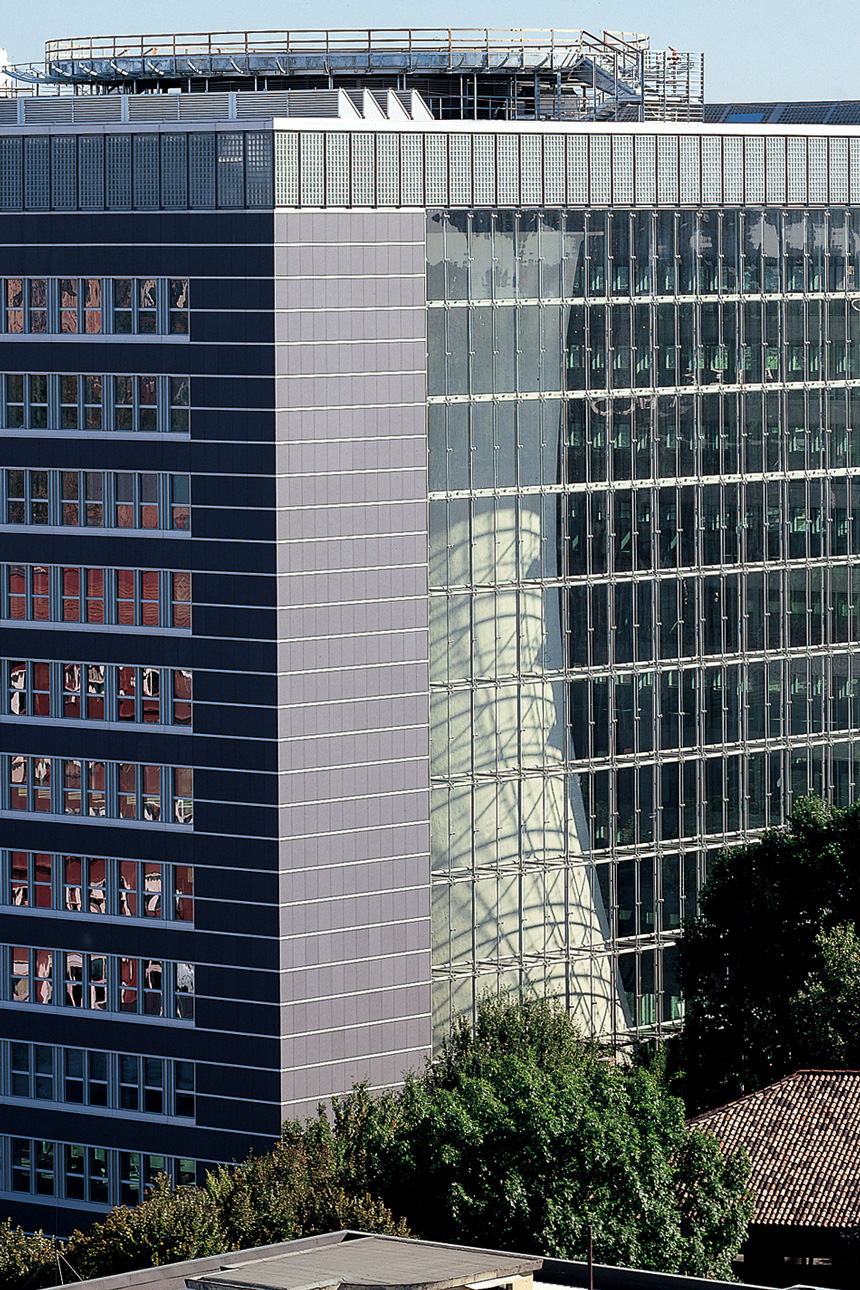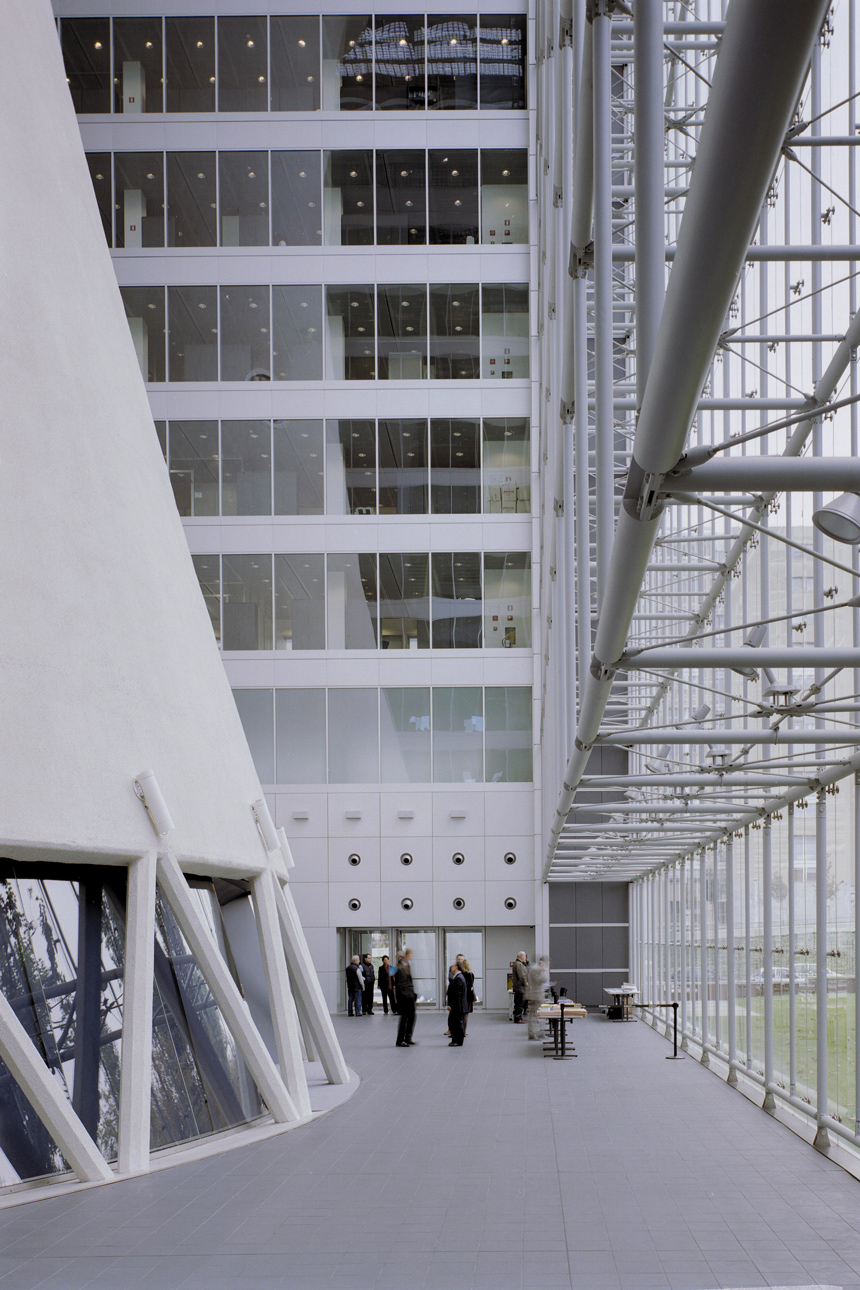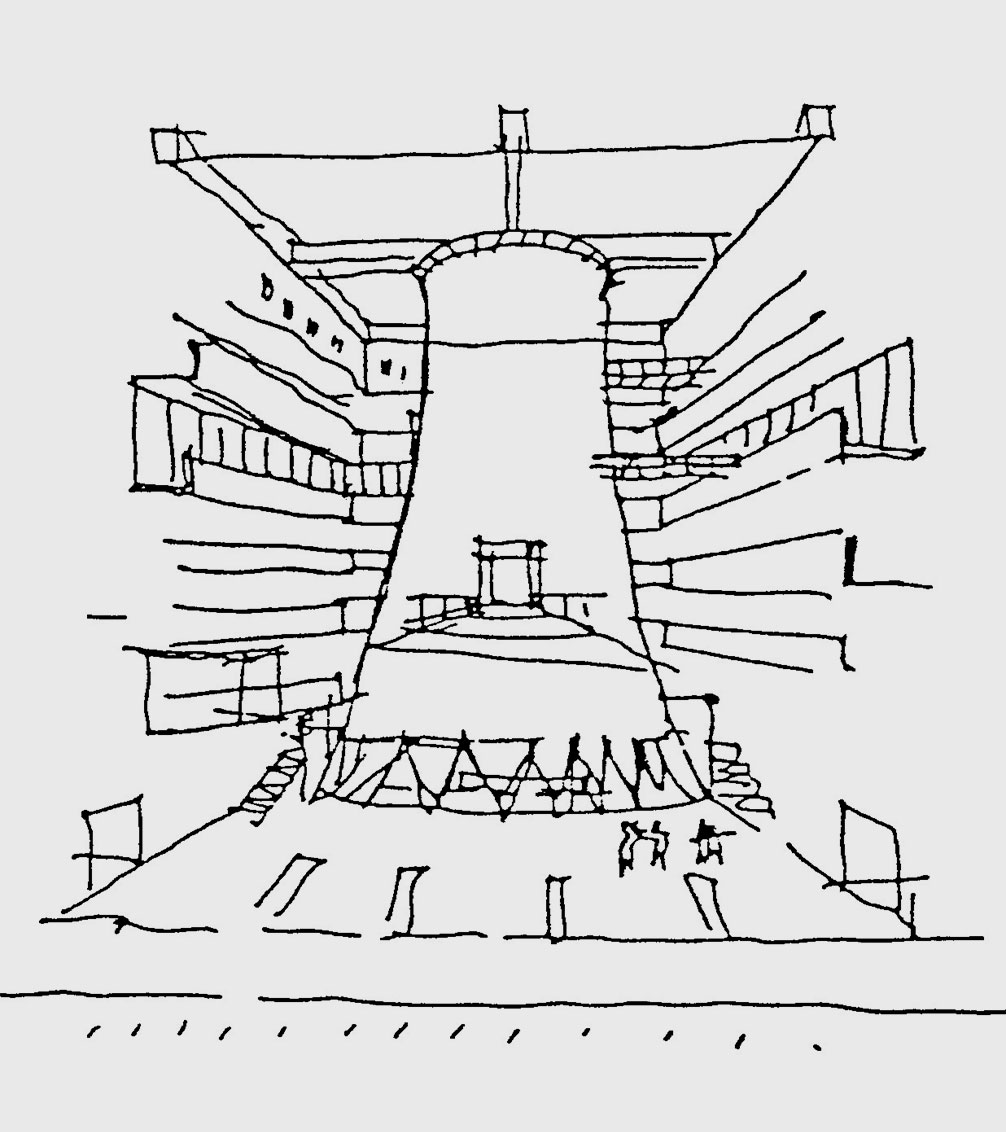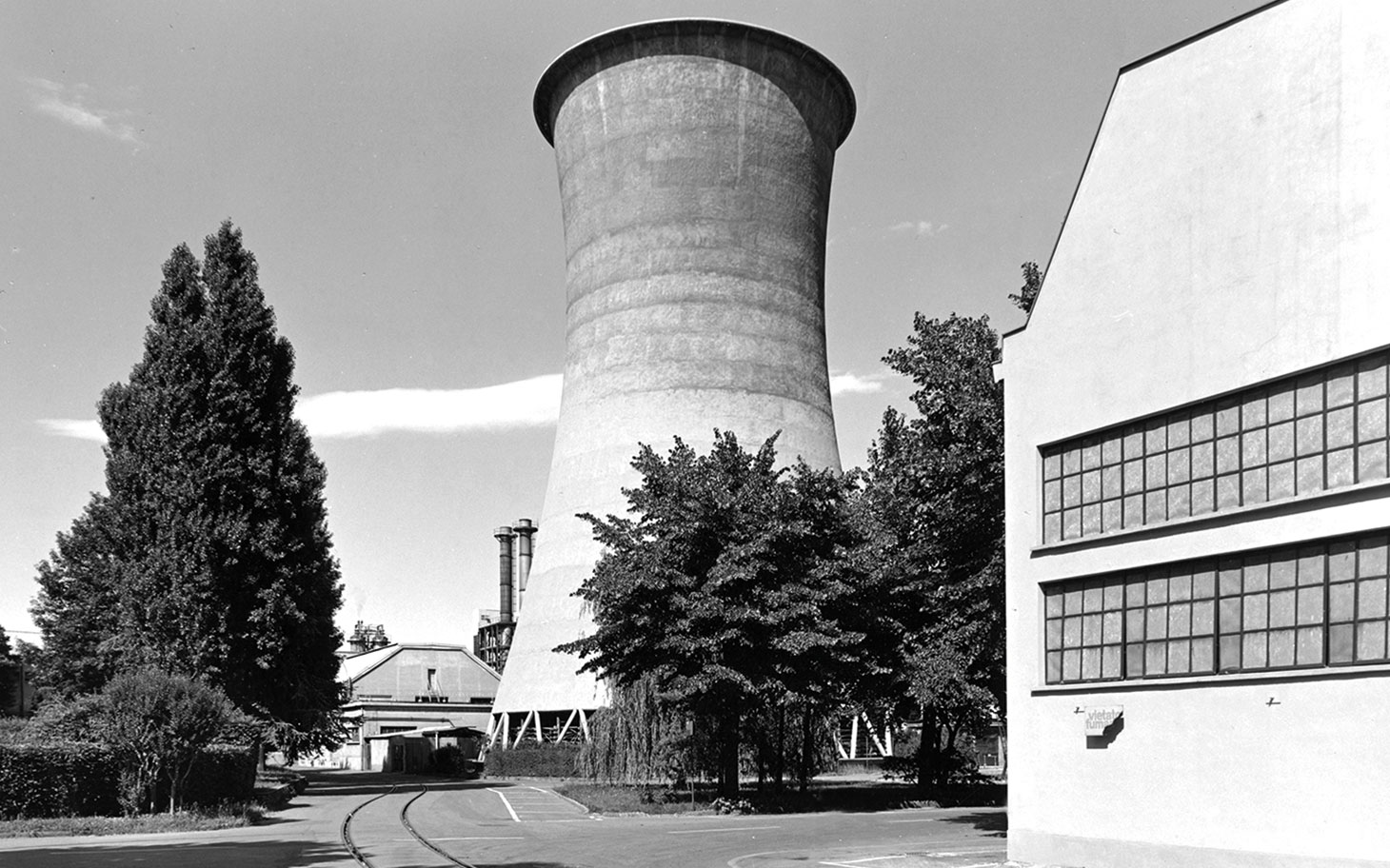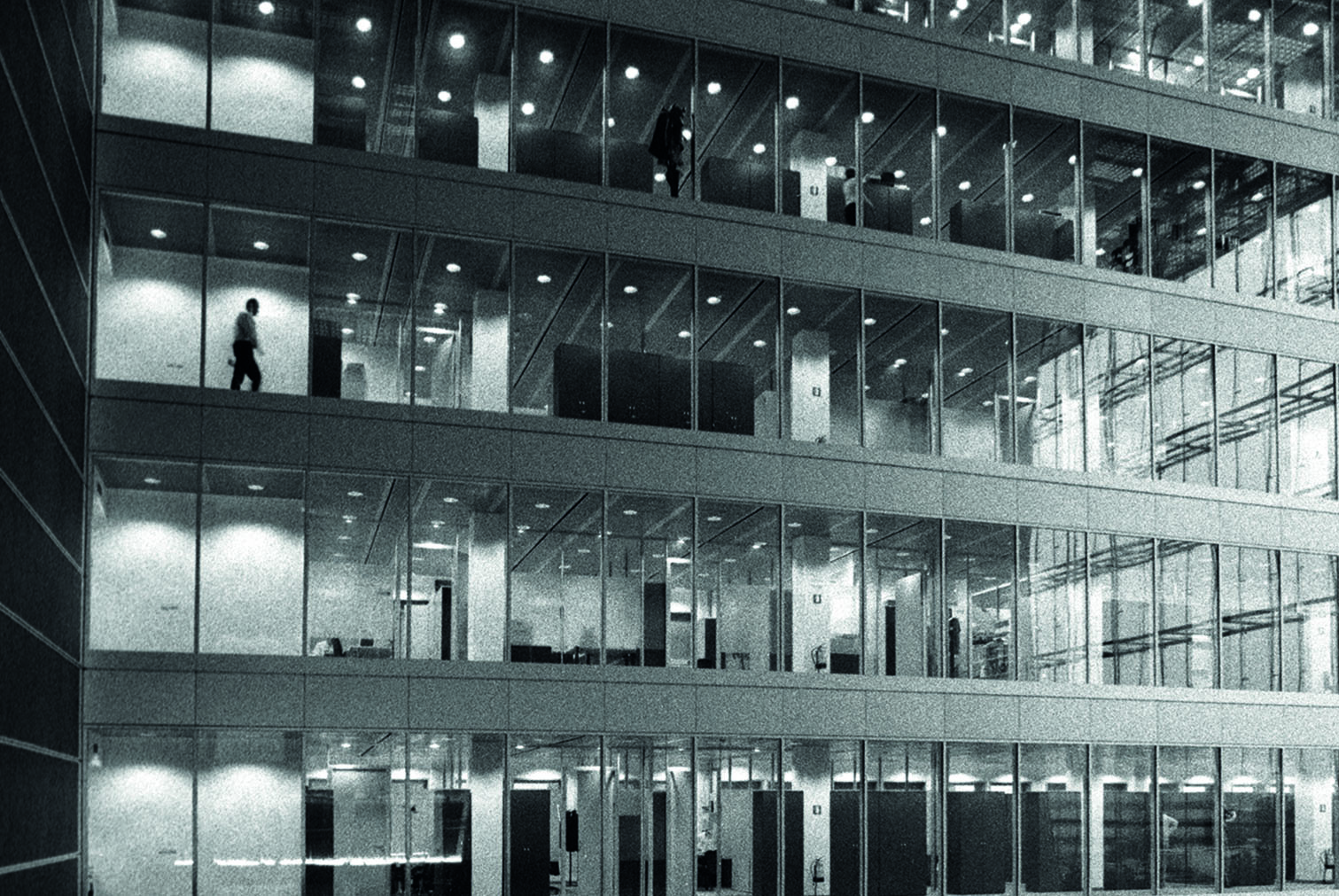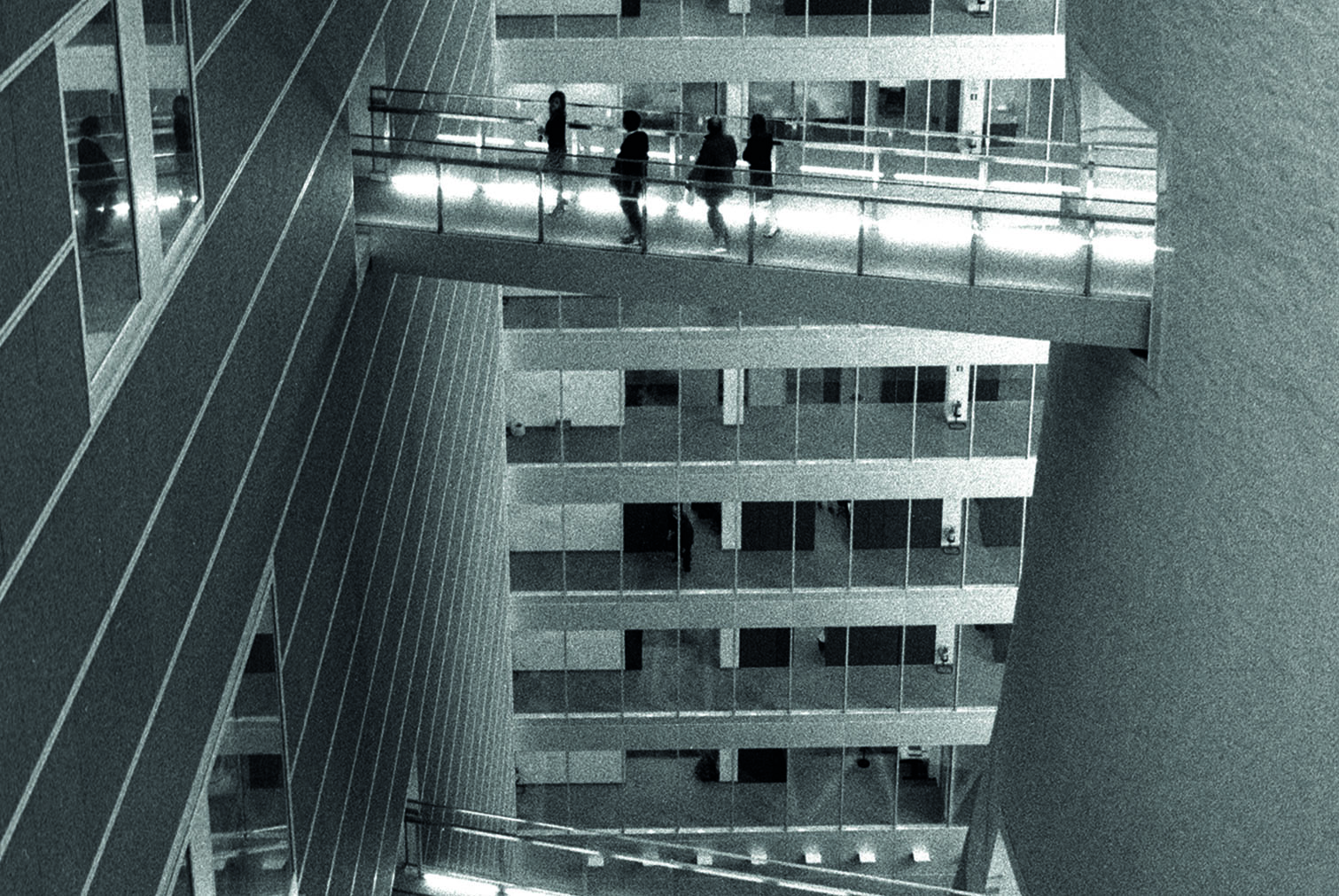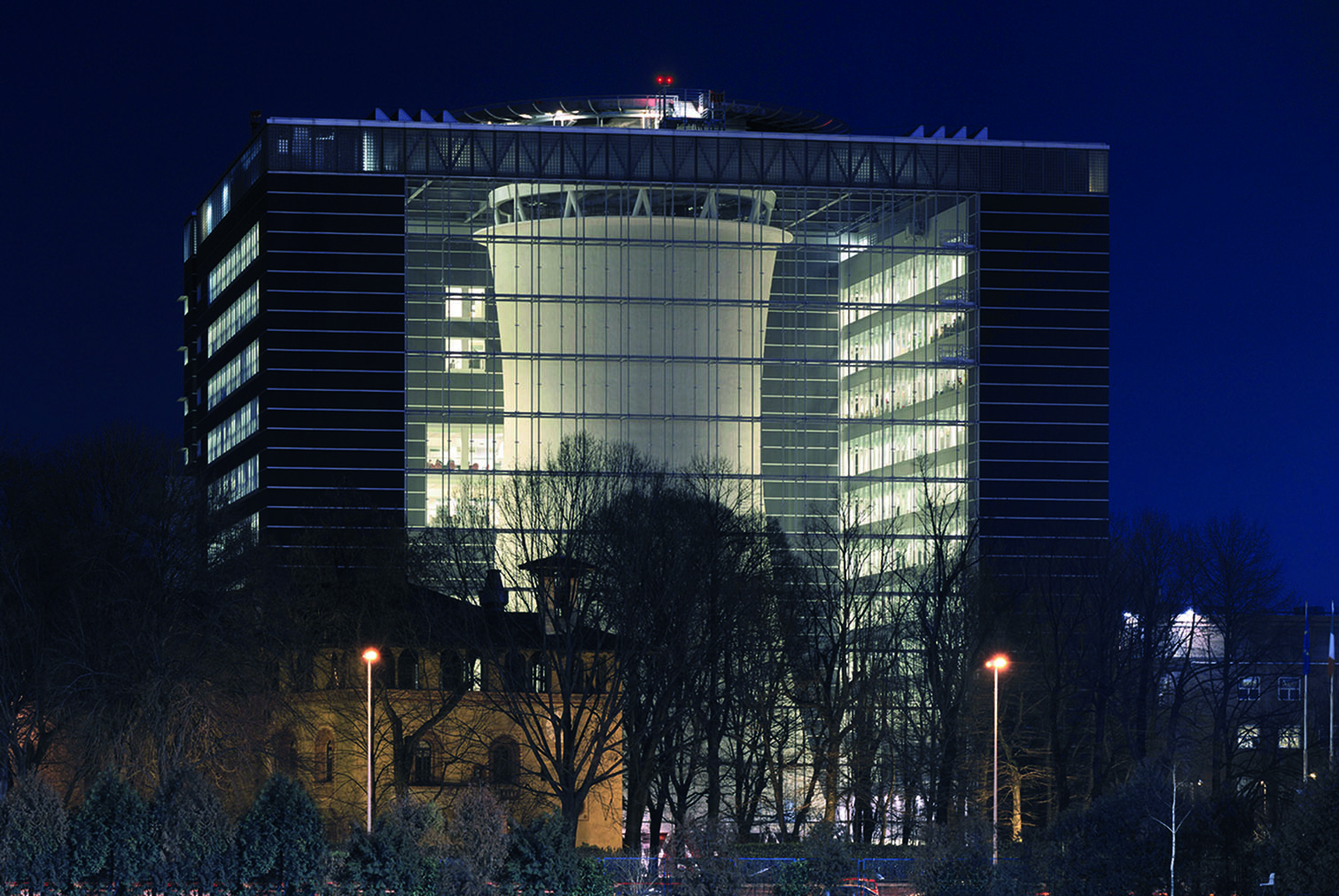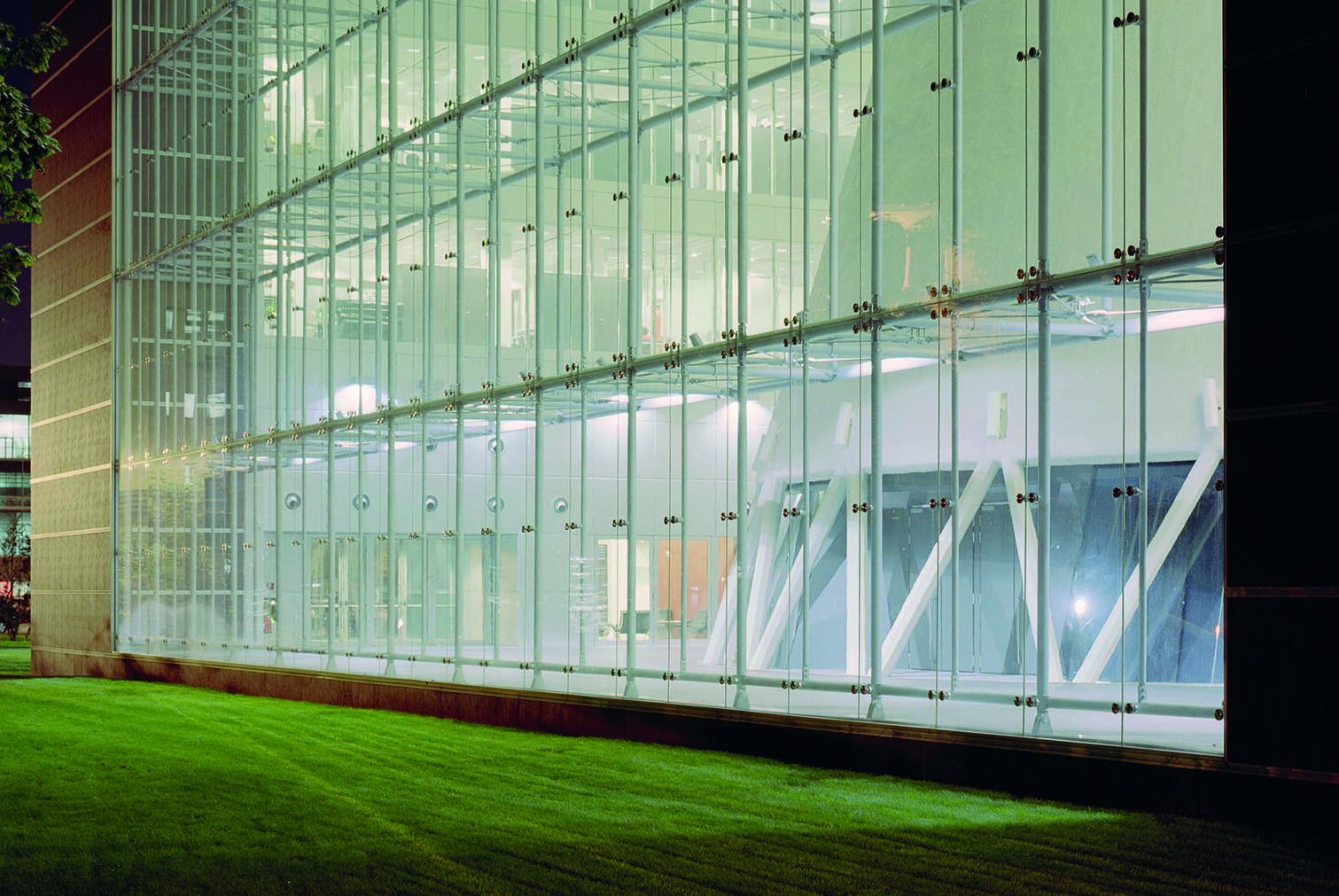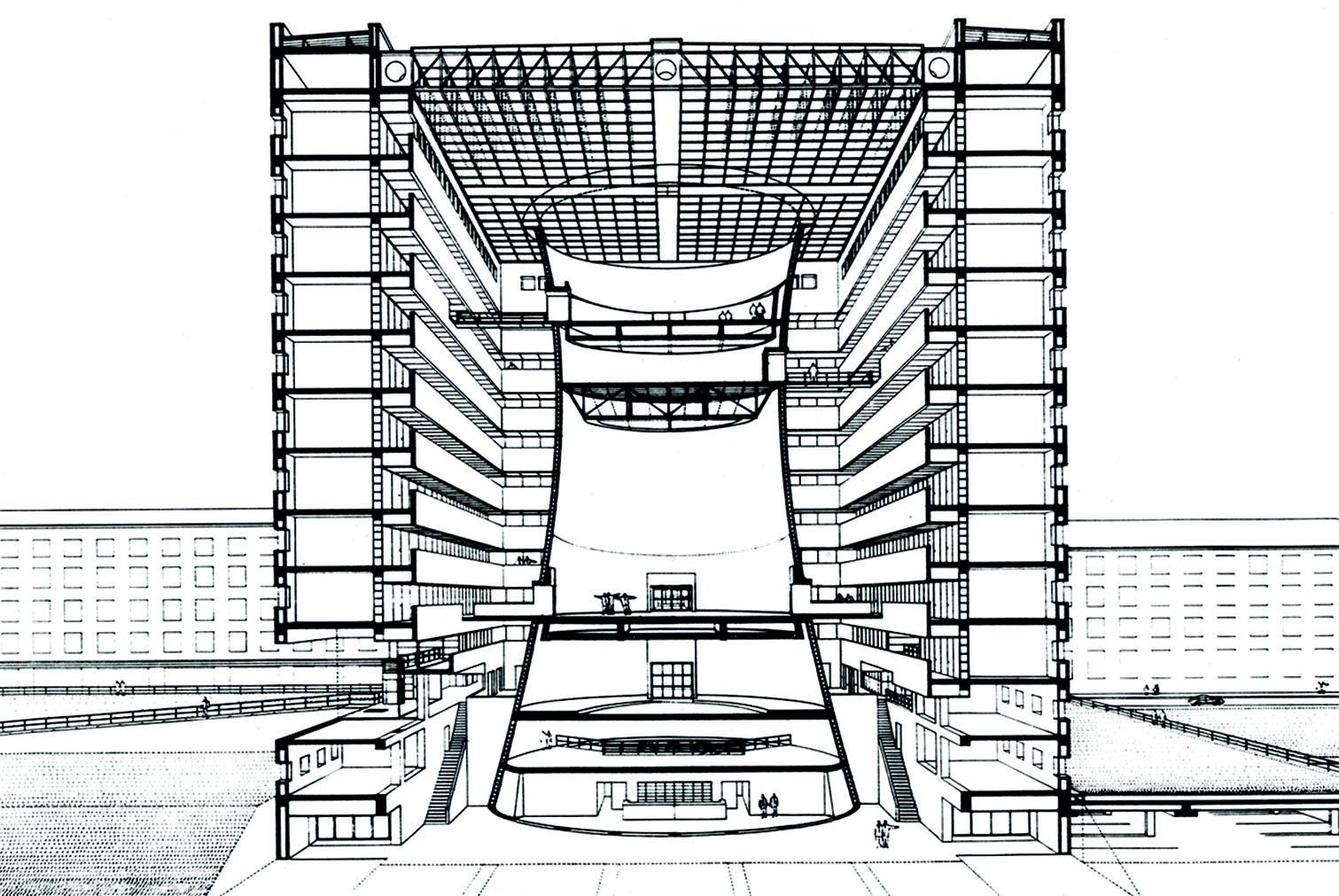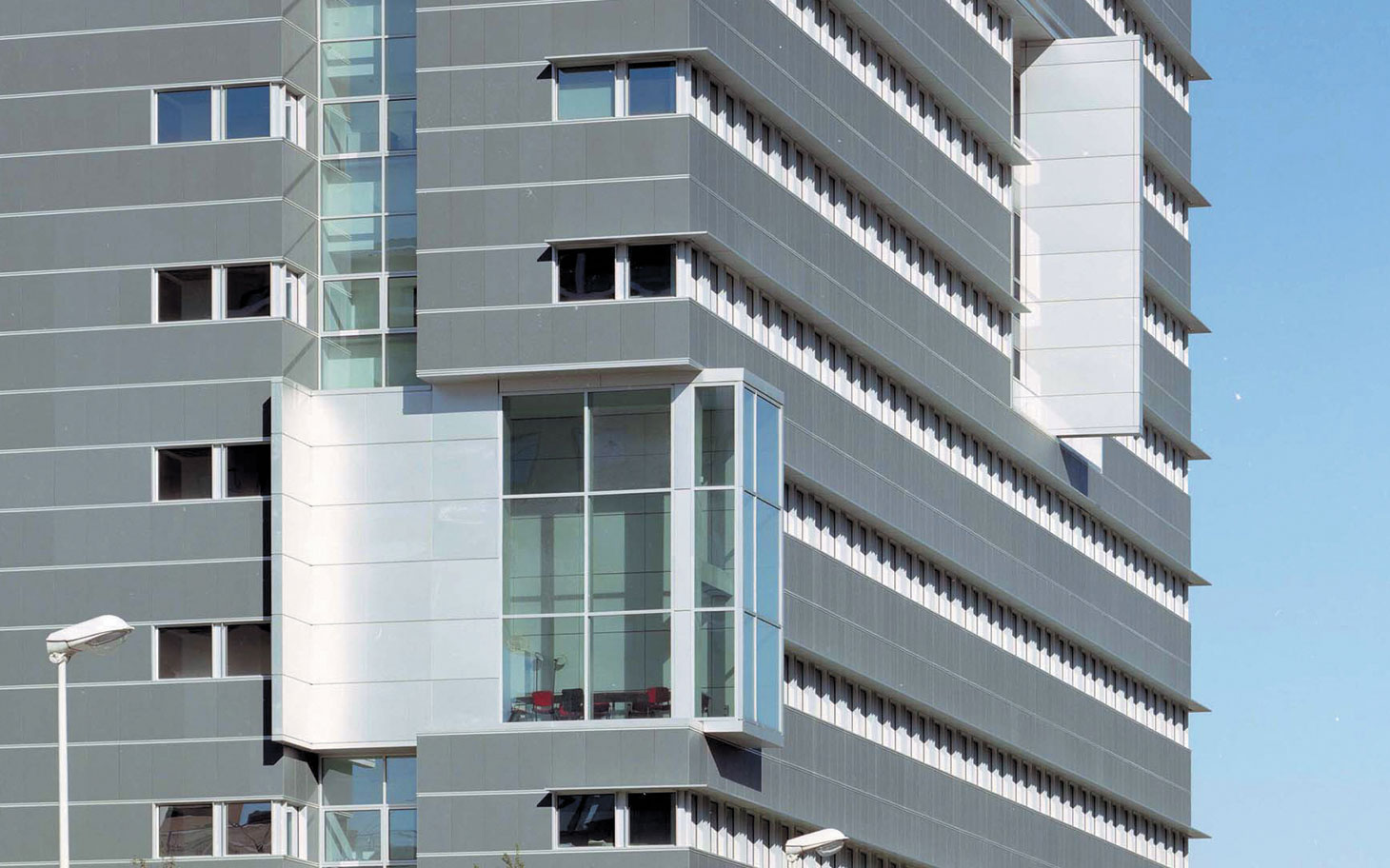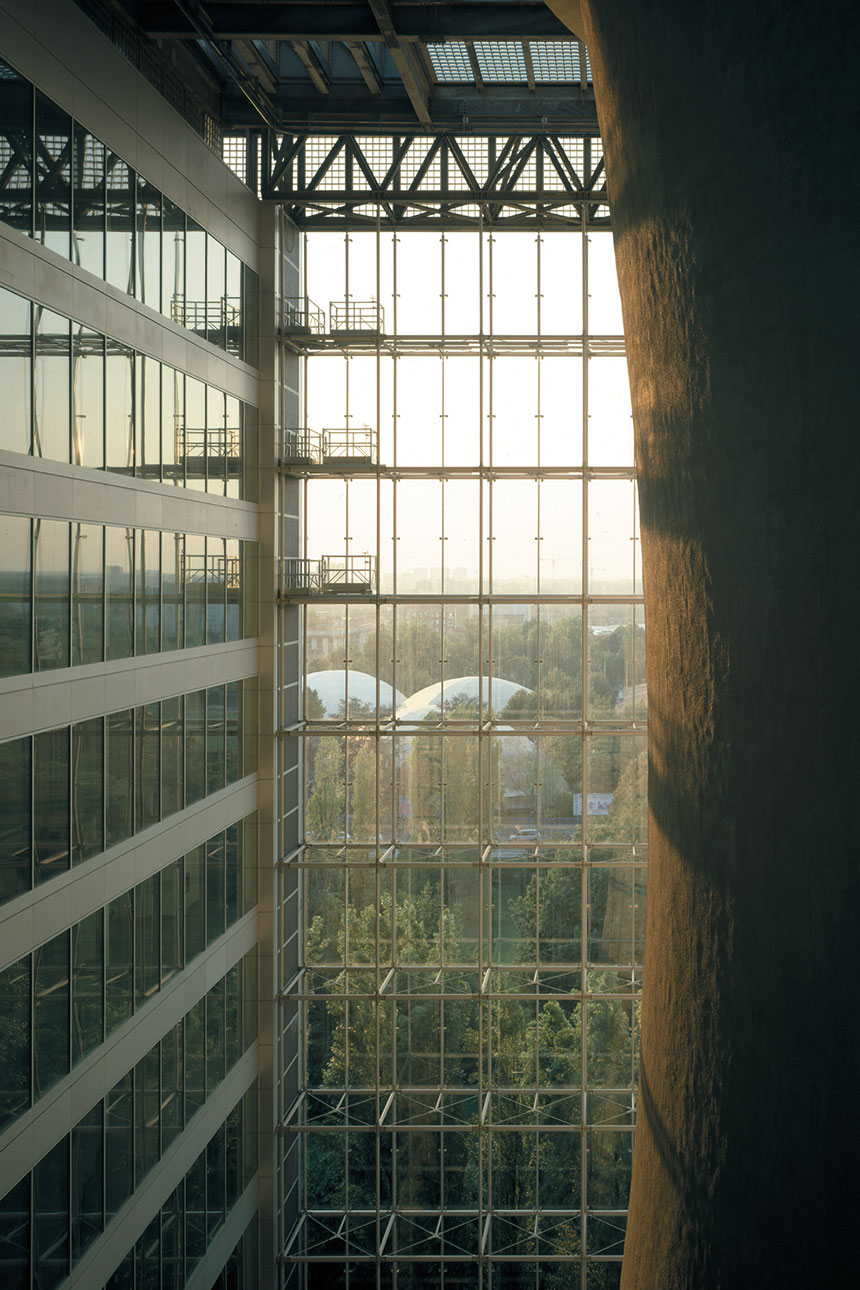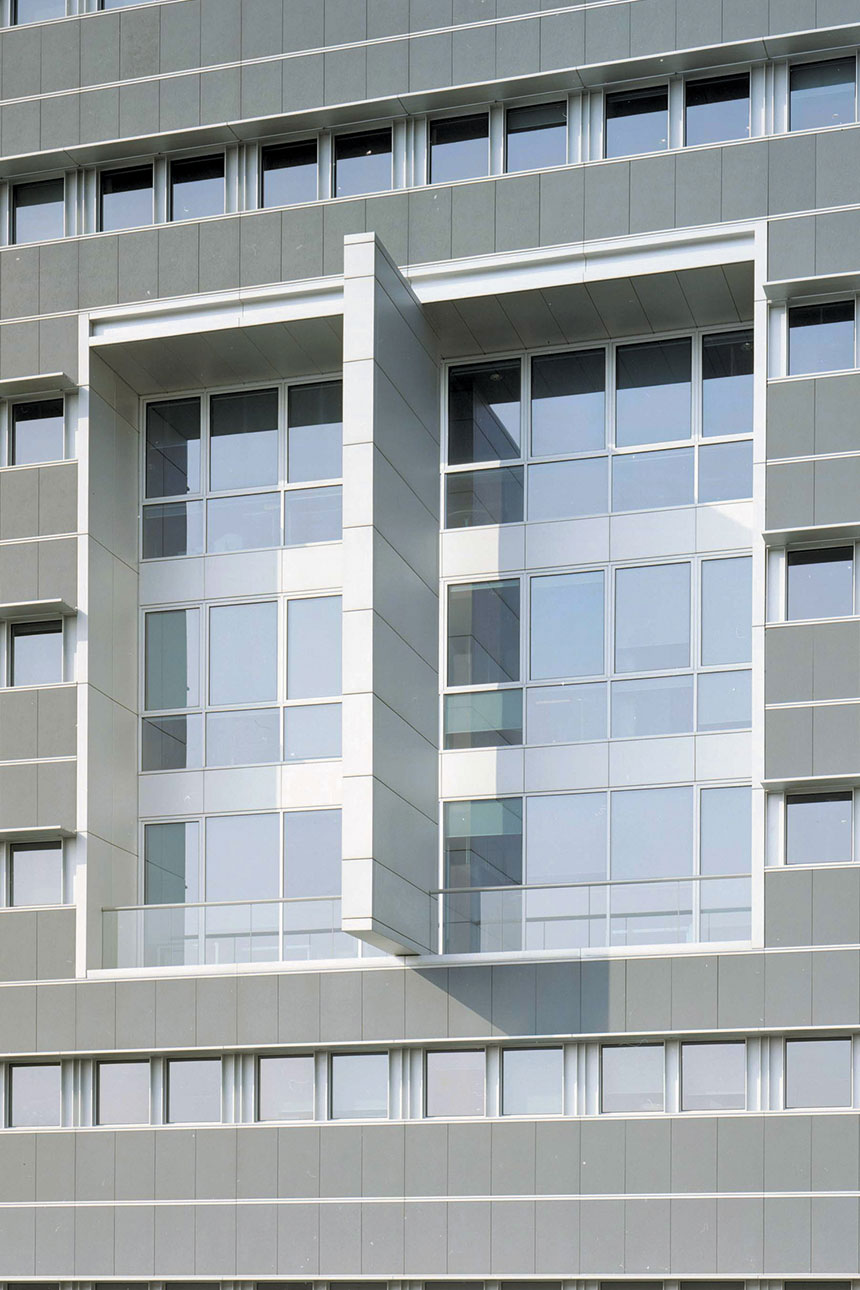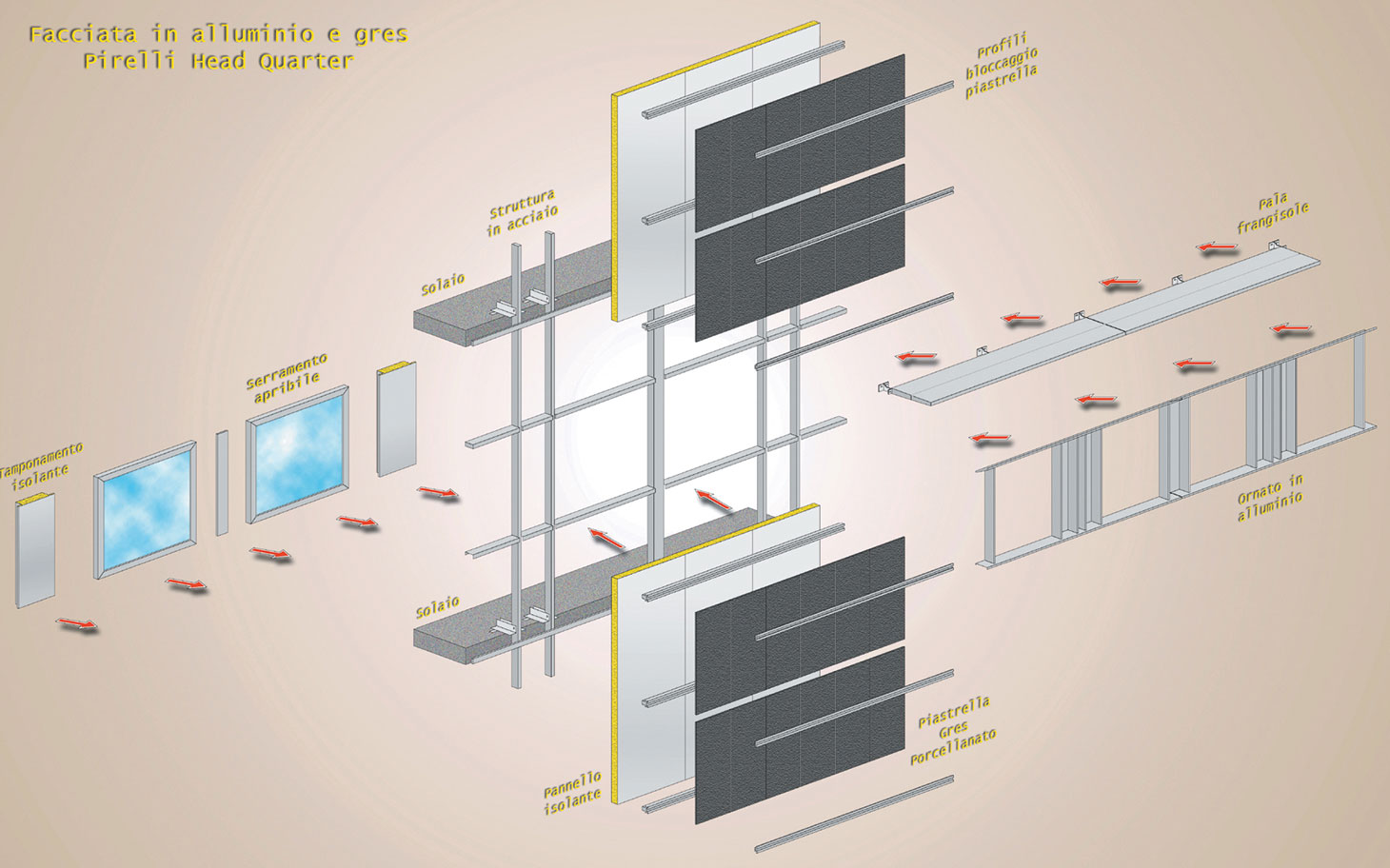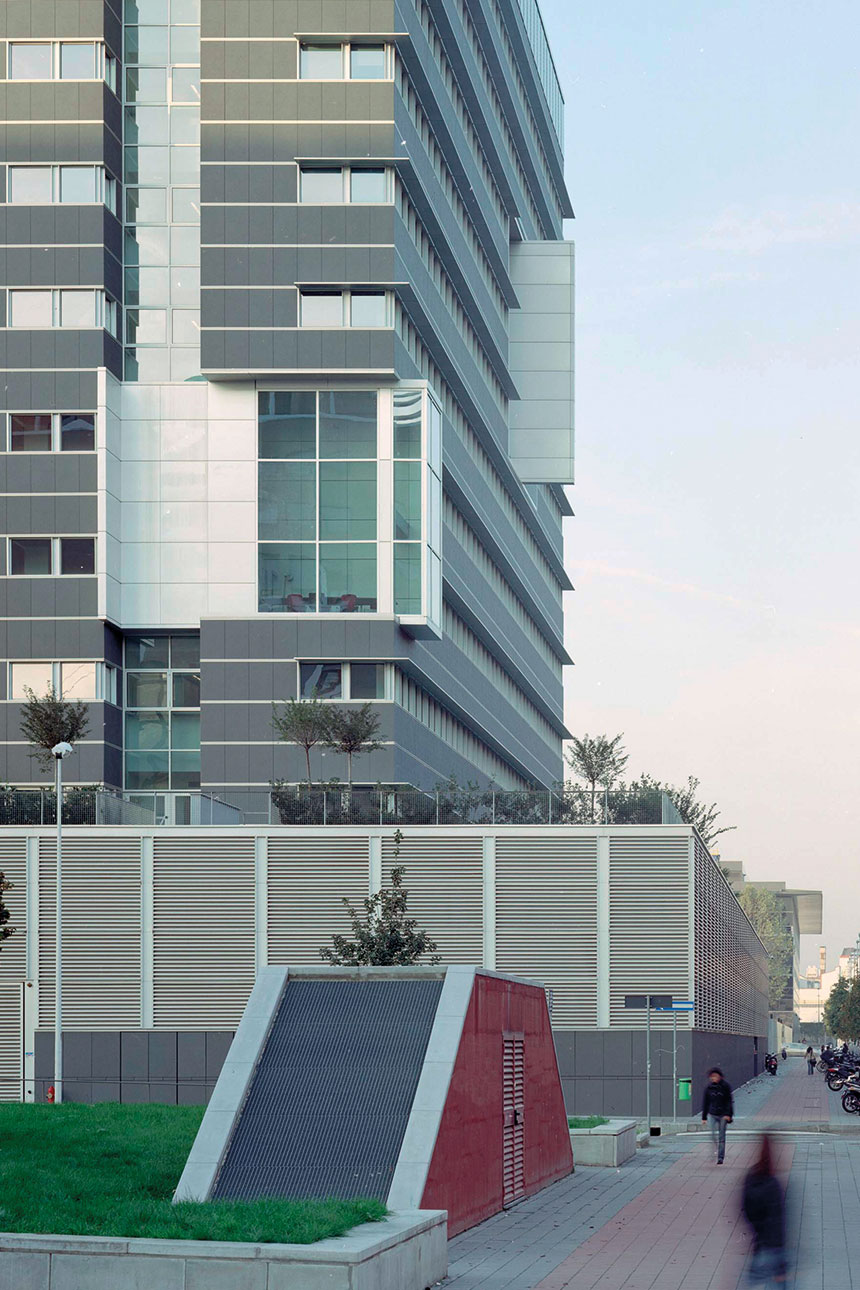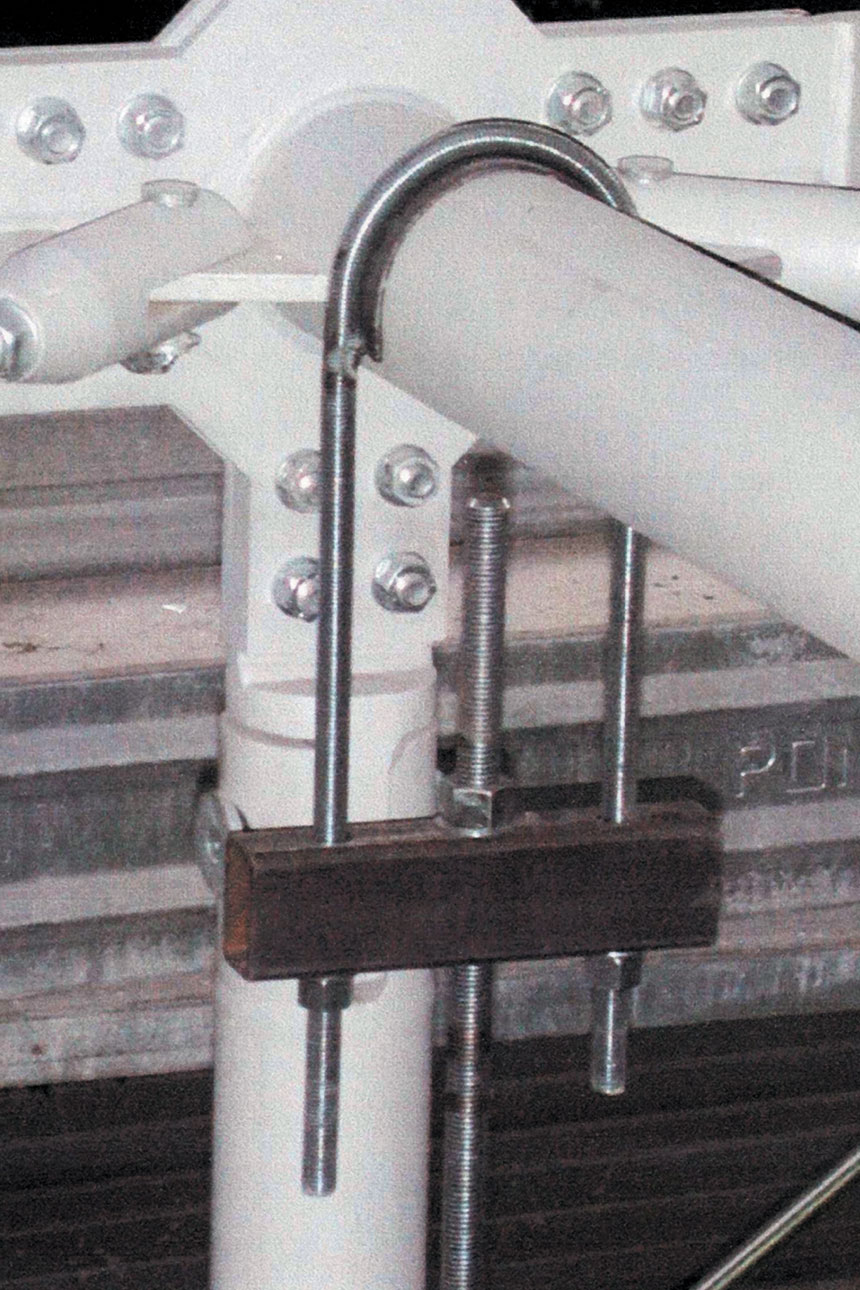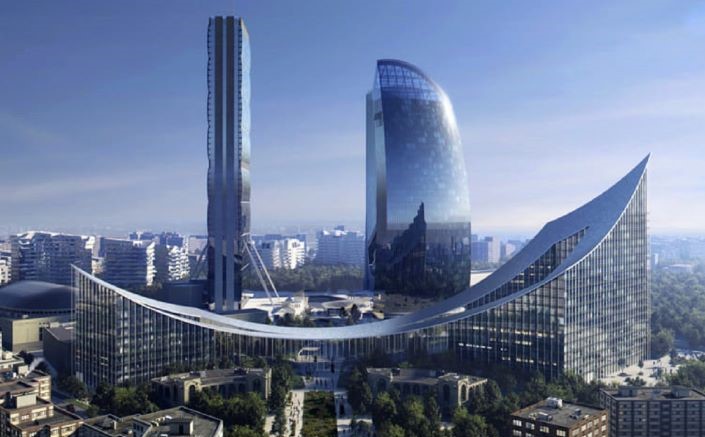The exterior has a predominance of ceramic stone cladding; special tiles designed for this project were inserted into a series of horizontal supports consisting of bespoke aluminium profiles completed by an external profile clip similar to a traditional glazed façade. This solution was extremely individual, when compared with a traditional ventilated façade, providing a regularity in the design which alternates with the ribbon windows. The windows are attached to a primary steel structure and are formed from aluminium frames with a thermal break. There are bow windows and a glazed façade which is constructed from a series of extruded aluminium mullions and transoms forming a grid which contains double glazed panels, there is an external aluminium profile which is attached to the mullion and transom grid and retains the glazed panels in place.
Crowning the upper perimeter and the roof of the building there is a zone of glass blocks that depict this area with an evanescence and translucency, blending the building into the horizon. This envelope of glazing results from an extremely original architectural solution combining transparency and light diffusion. Glass blocks with a length and height of 200mm, have been utilised here, and are assembled in specially formed galvanised steel frames, the blocks are mortared together and silicone has been used to ensure the impermeability of the finished panels.
The complexity of this project with its bespoke façade systems and the short time available - one year to design and build - turned out to be a real challenge to which the whole company replied with the maximum effort thus reaching the goals of a completed building and a satisfied client.
